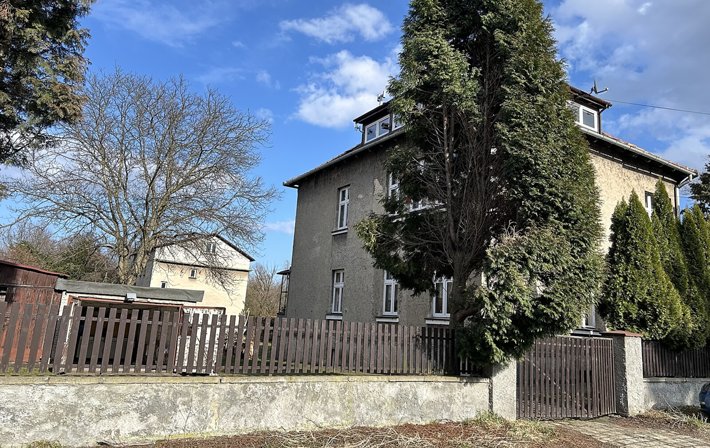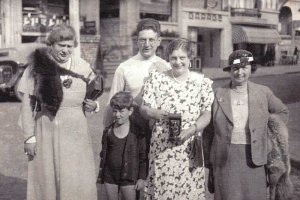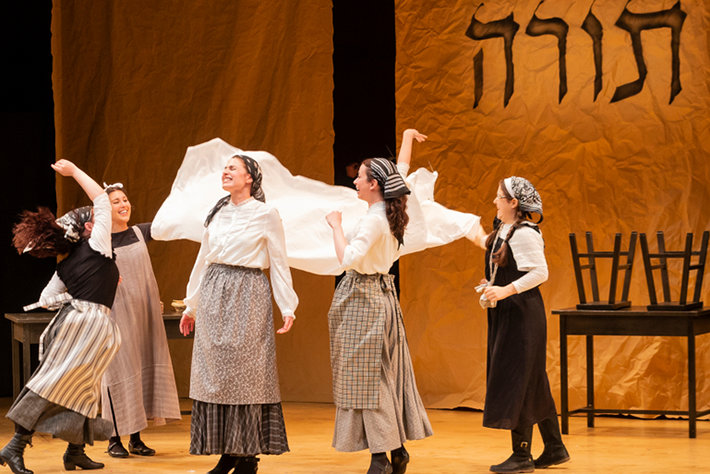“And these are the kohlrabi. The children love the kohlrabi.” The two women continue their stroll, the younger one pointing out to the older one the better features of the vegetable section and the wide varieties of buds and blossoms coming into bloom in another part of the garden. The older woman marvels at the size and all the work involved. Well, I didn’t do it all by myself,” the younger one chuckles. “I did have help.”
Punctuating the pastoral conversation is occasional gunfire, shouts and screams of terror off in the distance—an unavoidable annoyance, as the estate, with its gardens, tennis court and pool, is next door to the Auschwitz concentration camp. The Zone of Interest, directed by Jonathan Glazer, is a Holocaust film with no sign of atrocities, no visuals of innocents led to their doom, no angry or even smug faces of SS officers. Everything that we know of the Holocaust is carefully curtained out of sight, as one might shut the door to the tool shed to avoid offending sensitive eyes with the sight of ugly rusting implements.

Rudolf Höss, commandant of Auschwitz, his wife Helga, their children, horses and pet dog resided in a beautiful estate bordering on the human slaughterhouse that was Auschwitz. They picnic, swim, ride horses and enjoy their “ideal life.” Höss reads bedtime stories to his young daughter, jokes with Helga, and occasionally handles work in his at-home office. “Shall we contract this company to install more efficient crematoriums?” “Is it worth the extra expense?” “Would the Fuhrer approve of my promotion?” Helga tries on a fur coat recently stolen from a Jewish household. The oldest boy examines a handful of teeth someone has given him as a souvenir from the gas chambers.
Glazer has said that the film is two movies. He describes the continuous sounds in the background as the “other” film, as actually “the” film. And that “other” film is chillingly accurate, sound designer Johnnie Burn having spent a year painstakingly compiling period-accurate sounds of manufacturing machinery, crematoria, furnaces, boots and gunfire, along with human sounds of pain. Glazer interviewed many surviving residents of the surrounding community who remembered the horror of those years. “In fact,” he said, “some of them were children who were basically partisans, working with a resistance movement called the AK that was the sort of Polish underground. They were running documents and they were sharing information in and out of the camps. Because they were children, they were suspected less. I met this lady and she told me her story, which was what you see in the film. She was a local Polish, non-Jewish girl who felt compelled to do what she could for prisoners. And part of the thing she did was to leave food for them in construction sites at night, where she was less in danger than she would’ve been obviously during the day.”
The girl, Alexandria, is featured in the more searing episodes of the movie. She tiptoes through the construction sites surrounding the camp at night, leaving apples in the dirt for the starving prisoners. Glazer, who wanted no artificial light, no filters, no movie magic in his film—the camera acting as a human eye, no more, no less—was faced with a problem. How can you shoot in the darkness of night with no lighting? The solution was to use a thermal camera that registers not light but heat. The resulting scenes are macabre and beautiful, the young girl’s form visible, but as an incandescent force of good against the black, gently placing apples here, then there. Glazer said, “There’s something very beautiful and poetic about the fact that it is heat, and she does glow. It reinforces the idea of her as an energy.”
The Nazis in the movie are human size—not bellowing monsters. Höss who oversaw the murder of some 1.1 million human beings, is soft-spoken, even at times shy. When he oversees a meeting of concentration camp commandants on the latest orders from the Fuhrer—to kill 700,000 Hungarian Jews—the problem discussed is not a moral one but a logistical one. How can this be done most efficiently, in the least time, with the least waste? There are no raised voices, no inflamed passions. Just a committee meeting of executives who may just as easily have been planning a housing project.
Occasionally, the overt hate bubbles to the surface, as when Helga scolds the Auschwitz prisoner assigned to the family as a scullery maid. “I could have my husband spread your ashes across the fields of Babice!” she shouts, alluding to the nearby SS farm that uses Jewish slave labor to provide food for the officers.
But for the most part, what we see is the mundane, something that could pass for a home movie were it not for the sounds of agony in the insistent background. Even the movie’s title, The Zone of Interest, was the Nazi’s egregiously ordinary label for the death camp and its surroundings—a term just as suited to a workaday rubber stamp or a shipping file.
“I wanted to dismantle the idea of them as anomalies, as almost supernatural,” Glazer said. “You know, the idea that they came from the skies and ran amok, but thank God that’s not us, and it’s never going to happen again. I wanted to show that these were crimes committed by Mr. and Mrs. Smith at No. 26.”
As many have pointed out, the film highlights Hannah Arendt’s famous phrase, “the banality of evil.” Reporting on the trial of Holocaust architect Adolf Eichmann, she wrote, describing the unassuming little man in the bulletproof glass booth as “neither perverted nor sadistic” but “terrifyingly normal.”
But Glazer is going for more than a portrait of the ordinary lives of mass murderers. “For me,” he says, “this is not a film about the past. It’s trying to be about now and about us and our similarity to the perpetrators, not our similarity to the victims.”
And therein lies the true horror.
_________________
From its beginnings, the Church of Scientology has recognized that freedom of religion is a fundamental human right. In a world where conflicts are often traceable to intolerance of others’ religious beliefs and practices, the Church has, for more than 70 years, made the preservation of religious liberty an overriding concern.
The Church publishes this blog to help create a better understanding of the freedom of religion and belief and provide news on religious freedom and issues affecting this freedom around the world.
The Founder of the Scientology religion is L. Ron Hubbard and Mr. David Miscavige is the religion’s ecclesiastical leader.
For more information, visit the Scientology website or Scientology Network.


